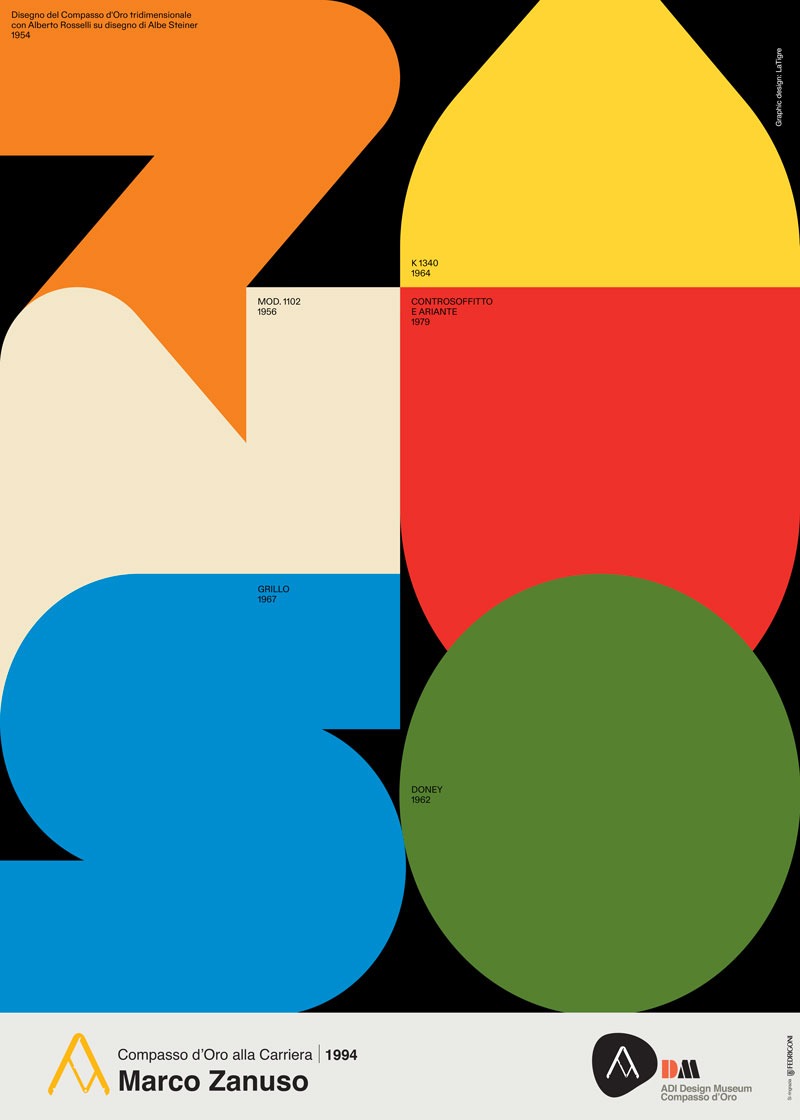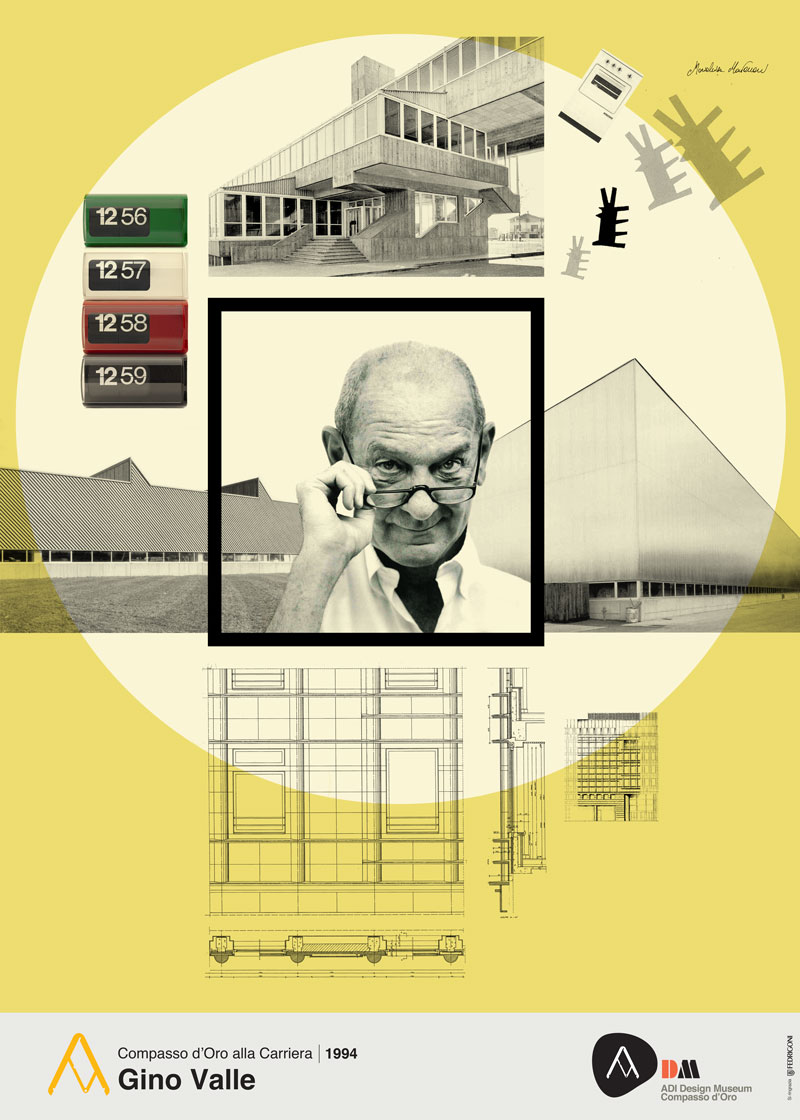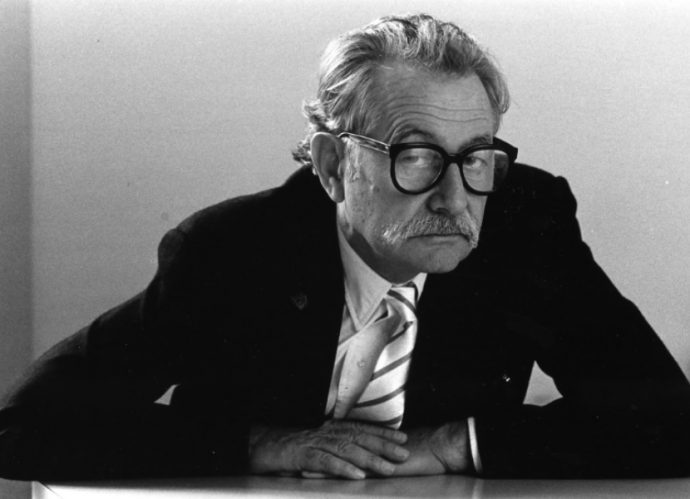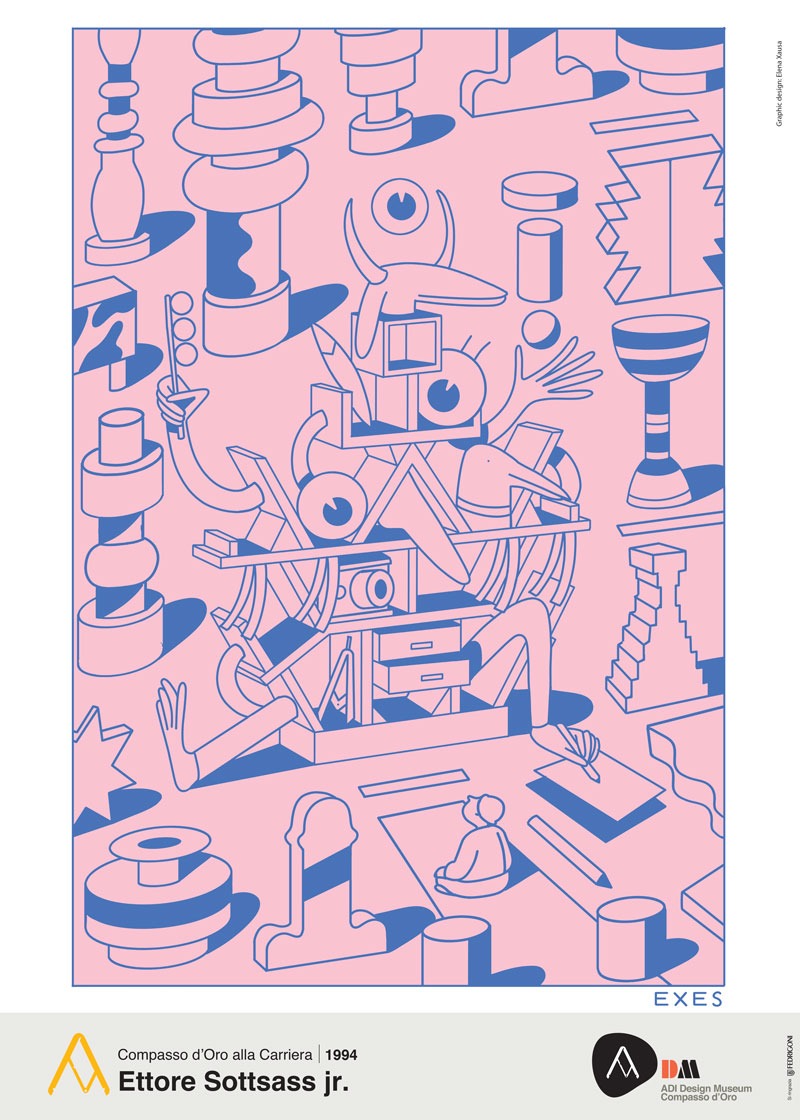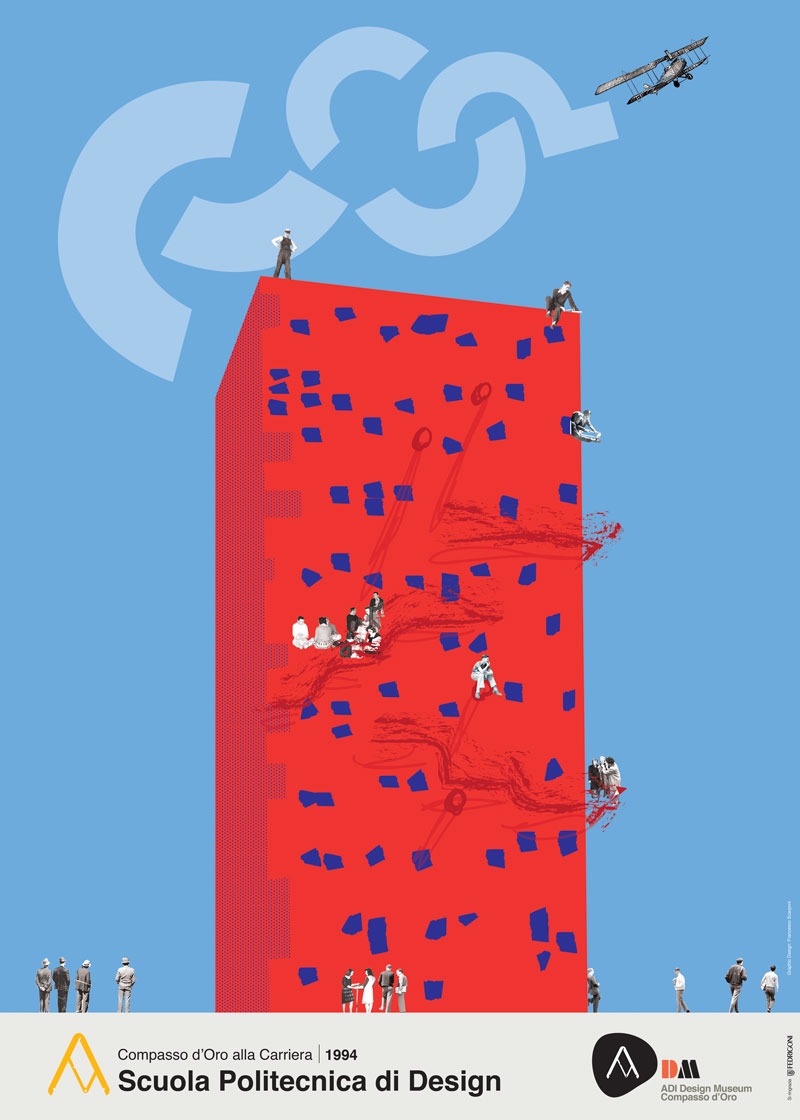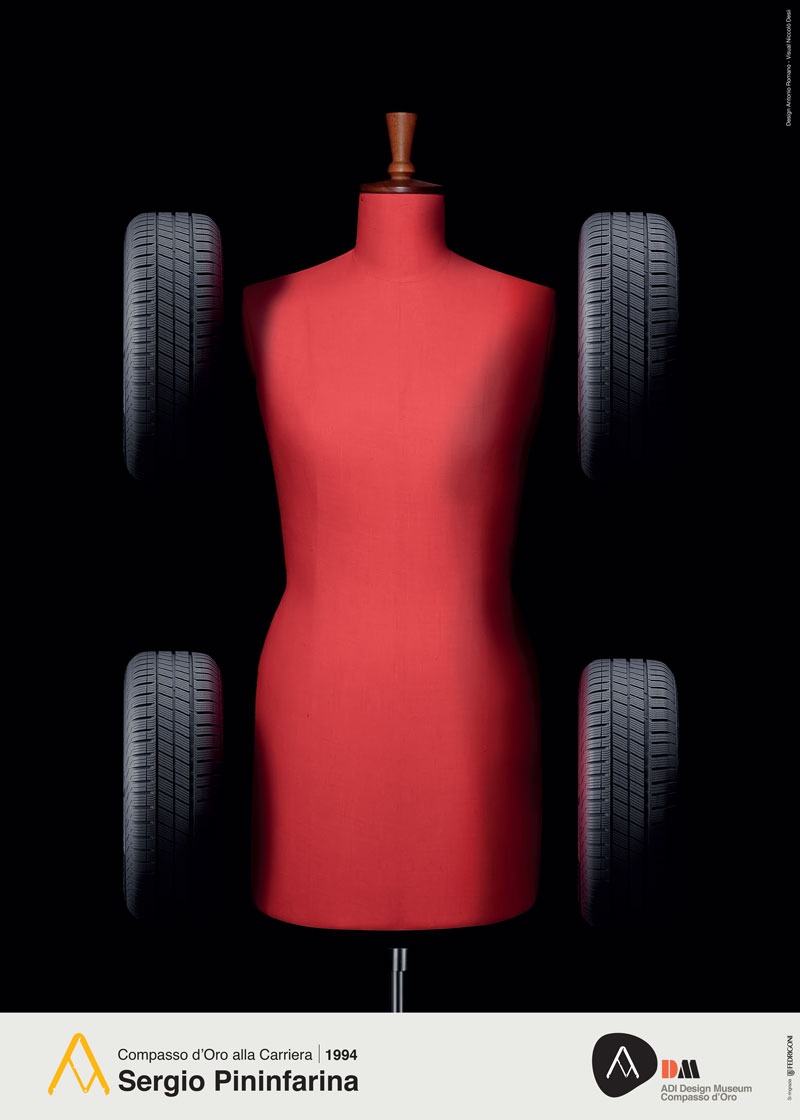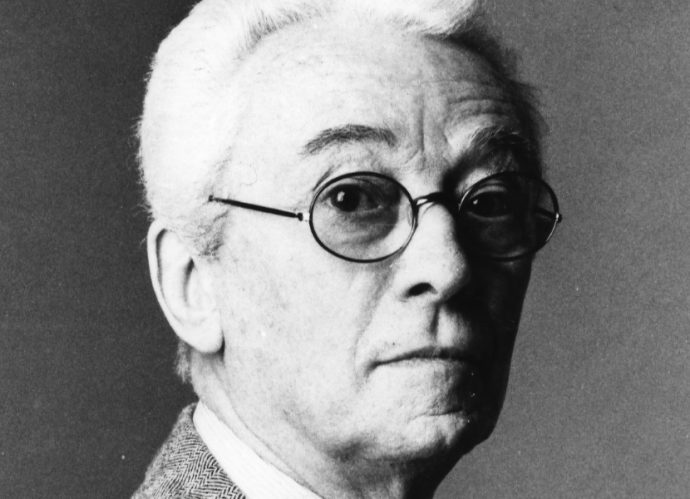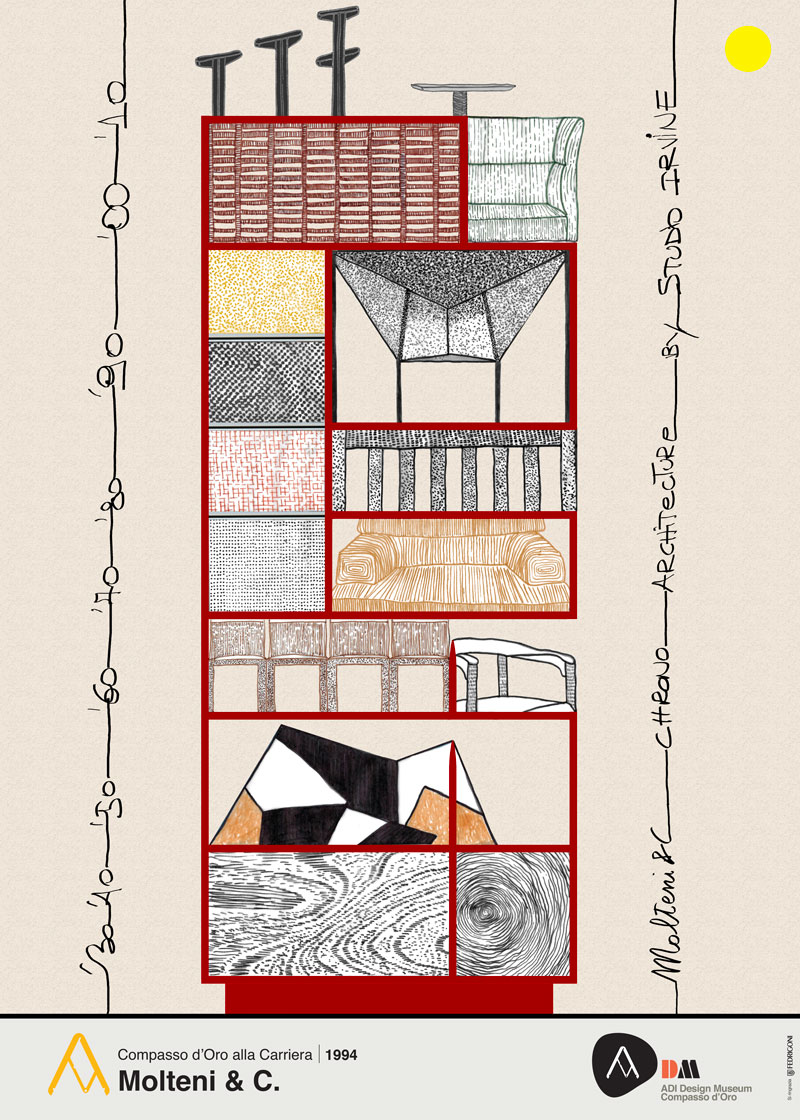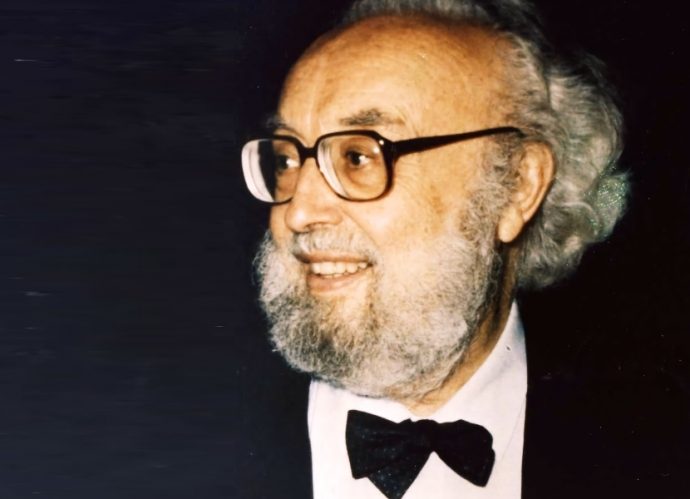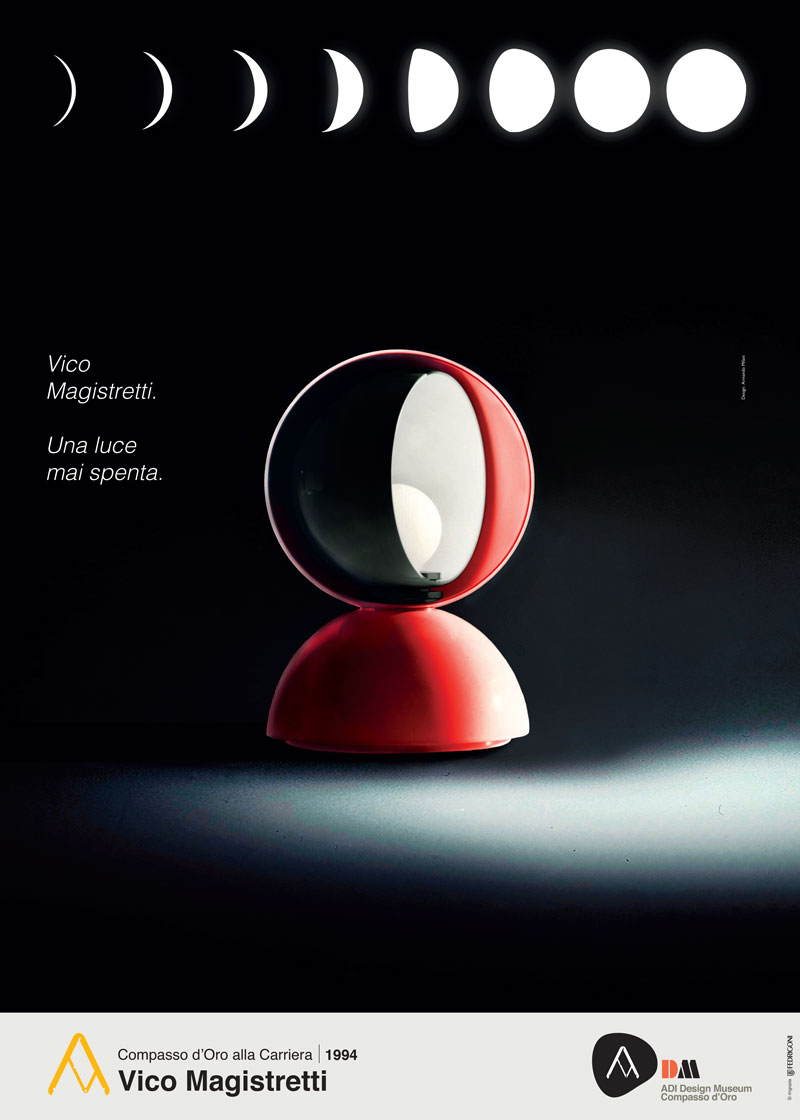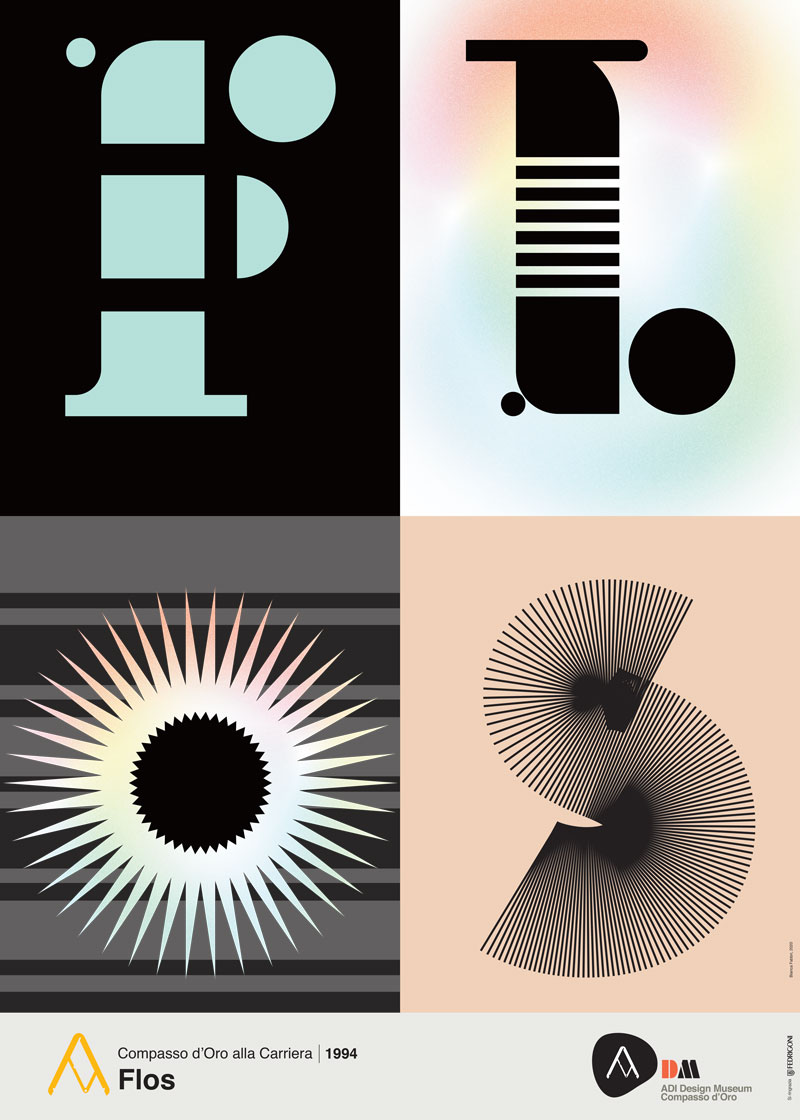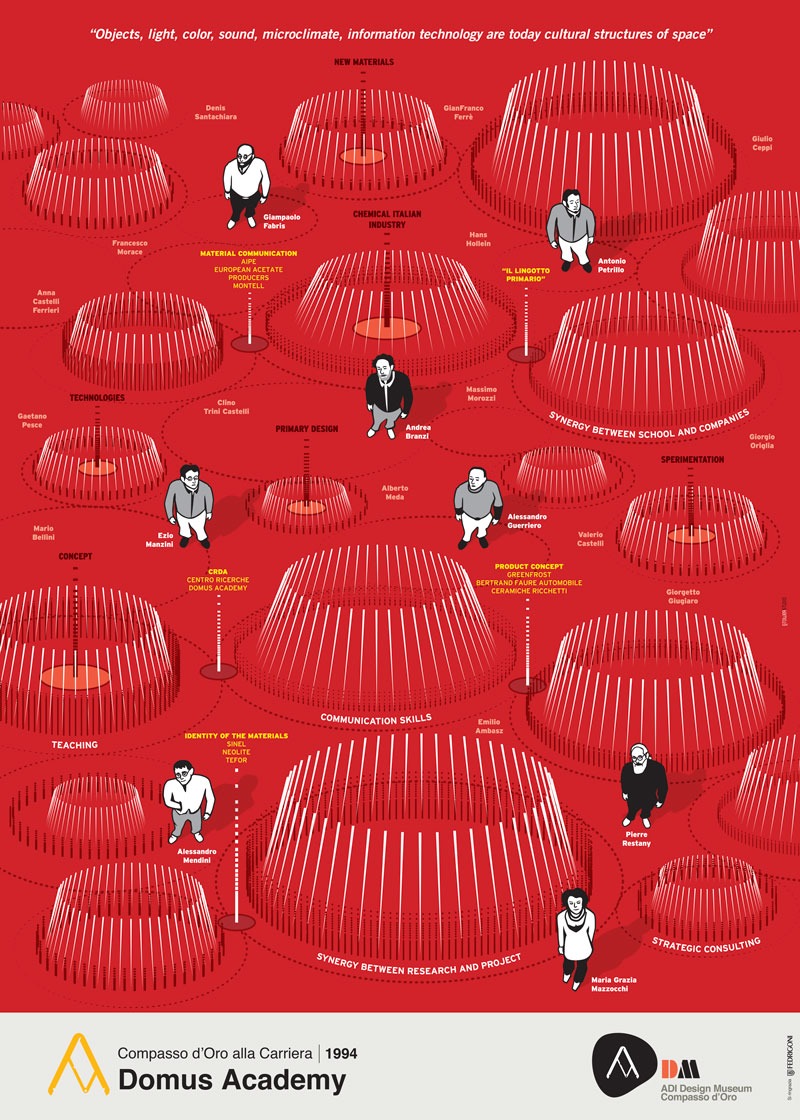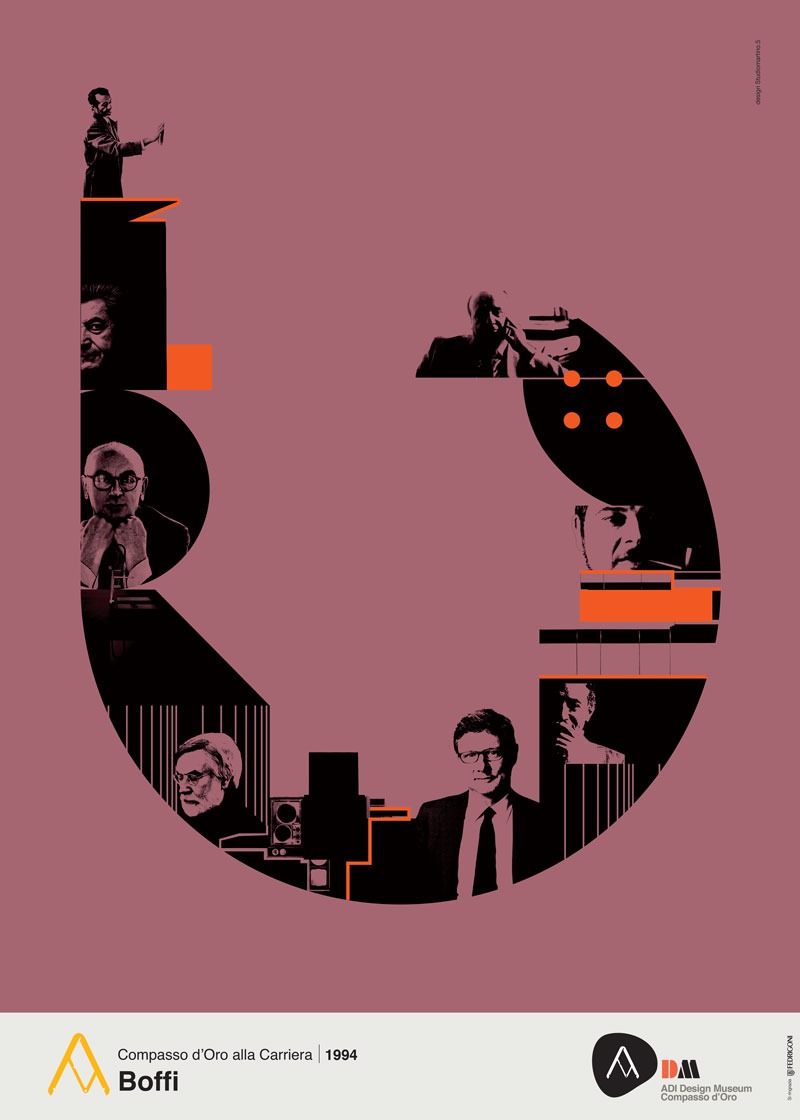
Graduated in Architecture in 1939 in Milan, he was editor of Casabella from 1953 to 1956 and collaborated with Arflex, Necchi and Borletti. From 1959 he started designing televisions (Doney, 1962) and radios (Cubo, 1964) with Richard Sapper for Brionvega. In 1964 he began collaborating with Kartell and Siemens and designed the Grillo telephone (1967) with Sapper. His projects include the Olivetti complexes in Argentina and Brazil (1961), the Necchi plants in Pavia (1961) and the Piccolo Teatro in Milan (1978). In 1956 he participated in the foundation of ADI, of which he was president from 1966 to 1969. He was awarded six Compasso d ‘Oro in addition to his Career Award.
JUSTIFICATION
One of the great masters of industrial design and one of the most convinced and capable animators of design culture in the last fifty years
